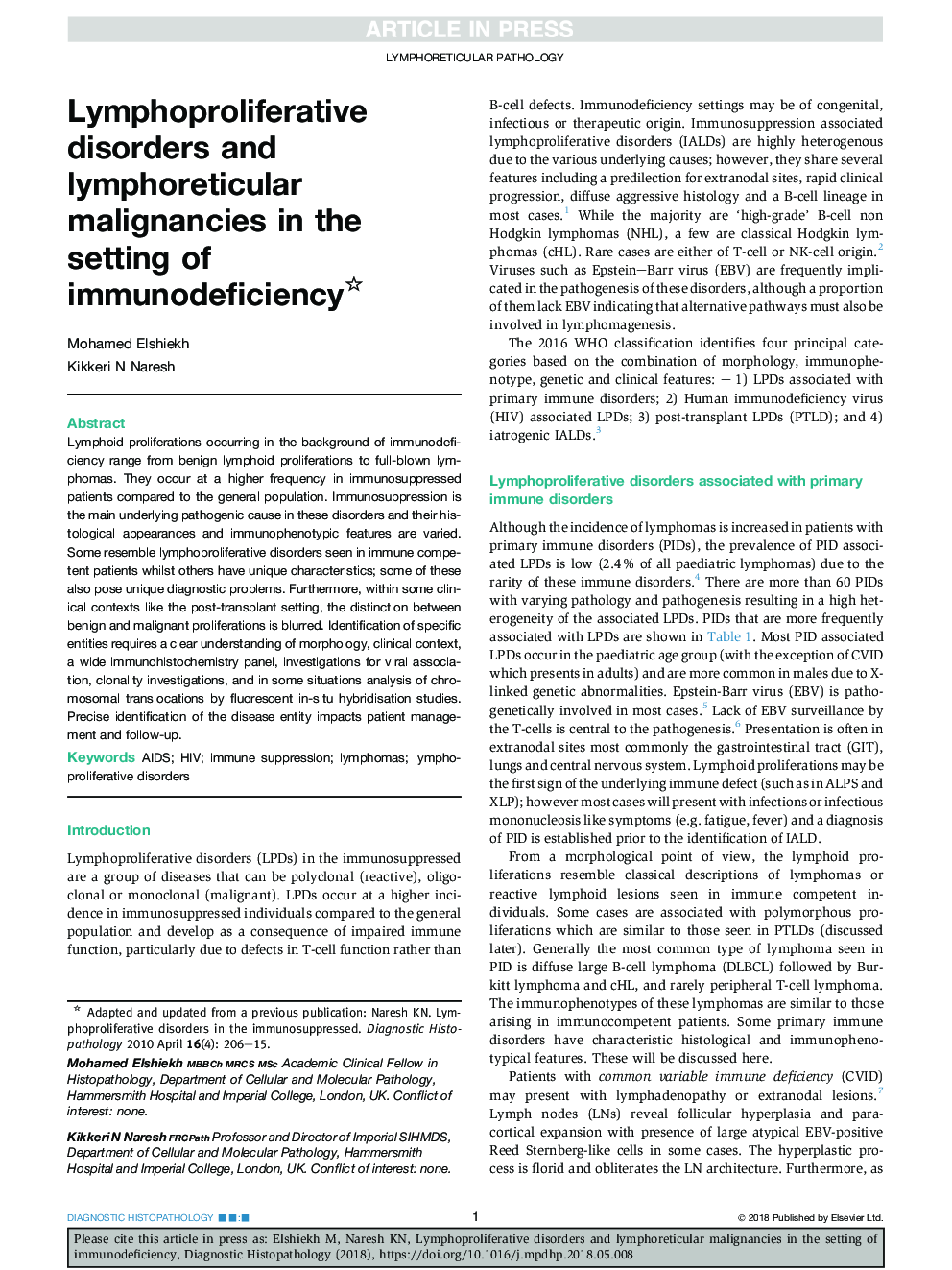| Article ID | Journal | Published Year | Pages | File Type |
|---|---|---|---|---|
| 8807291 | Diagnostic Histopathology | 2018 | 11 Pages |
Abstract
Lymphoid proliferations occurring in the background of immunodeficiency range from benign lymphoid proliferations to full-blown lymphomas. They occur at a higher frequency in immunosuppressed patients compared to the general population. Immunosuppression is the main underlying pathogenic cause in these disorders and their histological appearances and immunophenotypic features are varied. Some resemble lymphoproliferative disorders seen in immune competent patients whilst others have unique characteristics; some of these also pose unique diagnostic problems. Furthermore, within some clinical contexts like the post-transplant setting, the distinction between benign and malignant proliferations is blurred. Identification of specific entities requires a clear understanding of morphology, clinical context, a wide immunohistochemistry panel, investigations for viral association, clonality investigations, and in some situations analysis of chromosomal translocations by fluorescent in-situ hybridisation studies. Precise identification of the disease entity impacts patient management and follow-up.
Related Topics
Health Sciences
Medicine and Dentistry
Pathology and Medical Technology
Authors
Mohamed Elshiekh, Kikkeri N. Naresh,
